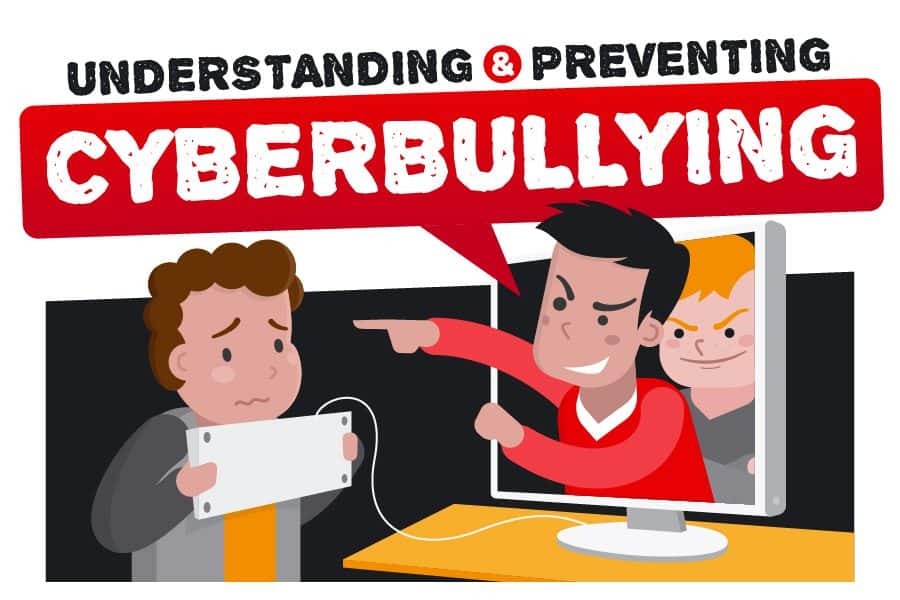Cyberbullying is one of the most concerning issues in today’s digital age. It can lead to emotional distress, low self-esteem, anxiety, and even long-term psychological effects on children. As a parent or guardian, taking proactive measures to prevent and address cyberbullying is essential to protect your child’s well-being.
Understanding Cyberbullying
Cyberbullying involves using digital platforms—social media, messaging apps, online games, or email—to harass, intimidate, or harm others. Unlike traditional bullying, it can occur 24/7, and the anonymity of the internet often emboldens bullies.
Preventing Cyberbullying
Open Communication
- Encourage your child to talk openly about their online experiences, whether positive or negative.
- Regularly ask about their friends and activities on social media or gaming platforms.
Educate Kids About Online Behavior
- Teach them the importance of kindness and respect in digital interactions.
- Explain how their words or actions online can impact others.
Set Clear Rules for Internet Use
- Limit screen time and designate appropriate times for device use.
- Specify which platforms, games, or websites are allowed and monitor their usage.
Use Parental Controls
- Utilize parental control apps and device settings to monitor online activity and block inappropriate content.
- Set alerts for suspicious or harmful messages.
Encourage Digital Literacy
- Teach your child to recognize and avoid suspicious links, phishing attempts, or anonymous messages.
- Show them how to use privacy settings effectively on social media platforms.
Promote Self-Confidence
- Help your child build resilience by encouraging hobbies, physical activities, and friendships outside the digital world.
- Boost their self-esteem so they’re less affected by negative online interactions.
Also Check
Recognizing the Signs of Cyberbullying
Children may not always verbalize their struggles. Be vigilant for these signs:
- Withdrawal from family or friends.
- Reluctance to use devices or sudden changes in online behavior.
- Emotional distress after using digital platforms.
- Decline in academic performance or disinterest in usual activities.
- Unexplained physical symptoms like headaches or trouble sleeping.
Steps to Address Cyberbullying
Listen and Support
- If your child reports cyberbullying, stay calm and listen without judgment.
- Reassure them that they are not at fault and that you will help them handle the situation.
Document the Evidence
- Take screenshots of the harmful messages, posts, or comments as evidence.
- Record dates, times, and platforms where the bullying occurred.
Report the Behavior
- Use the reporting tools on the platform where the bullying occurred to flag the content or account.
- Notify school authorities if the bullying involves classmates. Many schools have anti-bullying policies.
Block and Restrict Access
- Block the bully from contacting your child.
- Adjust privacy settings to prevent further interactions.
Seek Professional Help
- If your child shows signs of severe emotional distress, consult a therapist or counselor specializing in childhood or adolescent mental health.
- Encourage open discussions in support groups or peer counseling programs.
Empowering Kids to Respond
Teach children these strategies to handle cyberbullying effectively:
- Don’t Respond in Anger: Bullies thrive on reactions; teach your child to stay calm.
- Report Immediately: Encourage them to notify you or a trusted adult if they experience bullying.
- Avoid Retaliation: Responding aggressively can escalate the situation.
- Stay Offline Temporarily: Taking a break can help reduce stress while you address the problem.
Creating a Safe Digital Environment
- Model Healthy Online Habits
Show your child how to use technology responsibly and demonstrate respectful communication online. - Foster Inclusivity
Encourage empathy and inclusiveness in their offline and online friendships. - Promote a Positive Digital Footprint
Teach your child to share uplifting and positive content, which discourages negativity.
Preventing and addressing cyberbullying requires vigilance, communication, and proactive measures. By equipping your child with the knowledge, tools, and emotional support to navigate the digital world, you can help them stay safe and resilient against online harassment. Remember, fostering a nurturing and trusting relationship with your child is the most powerful shield against the effects of cyberbullying.







